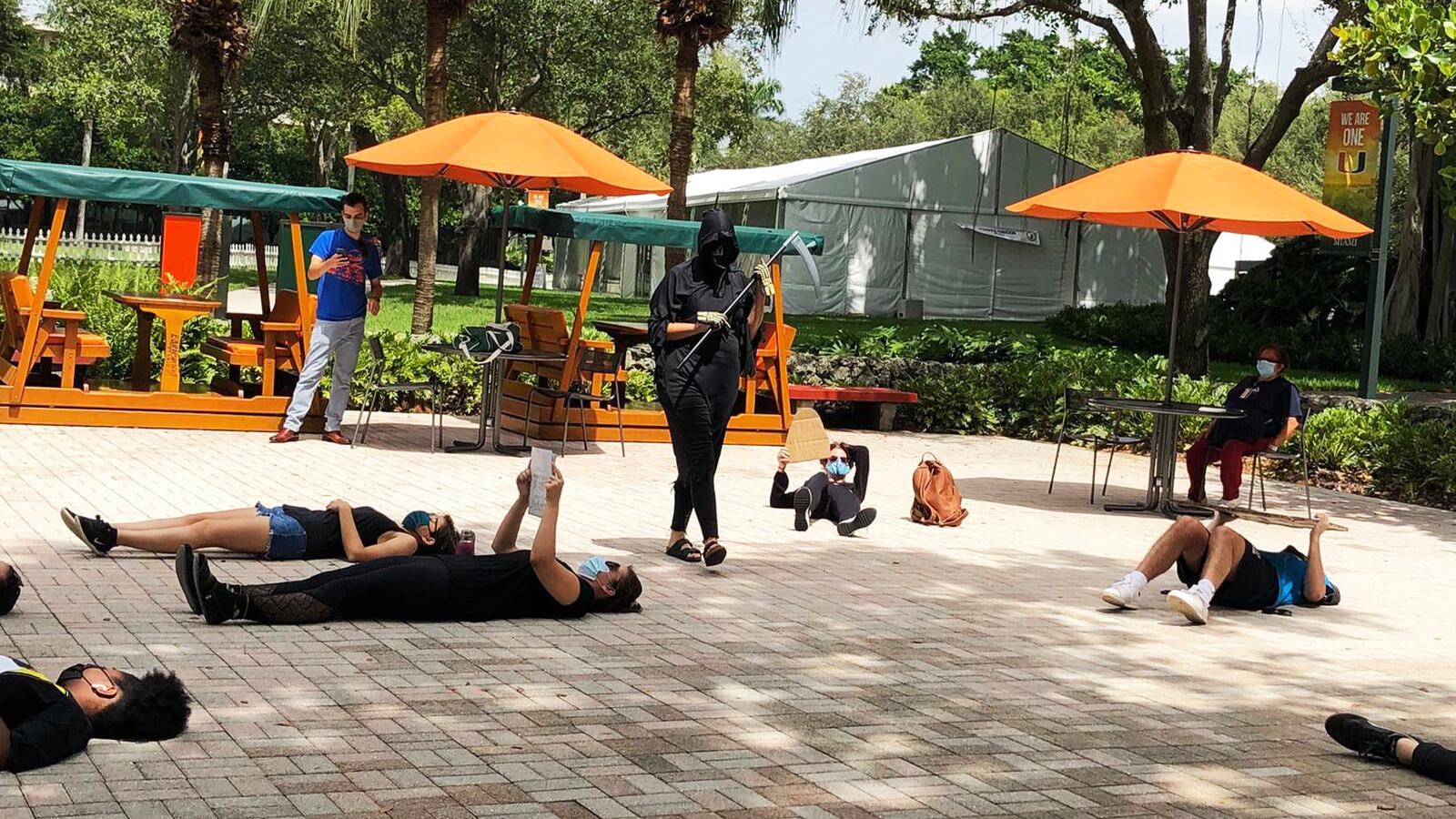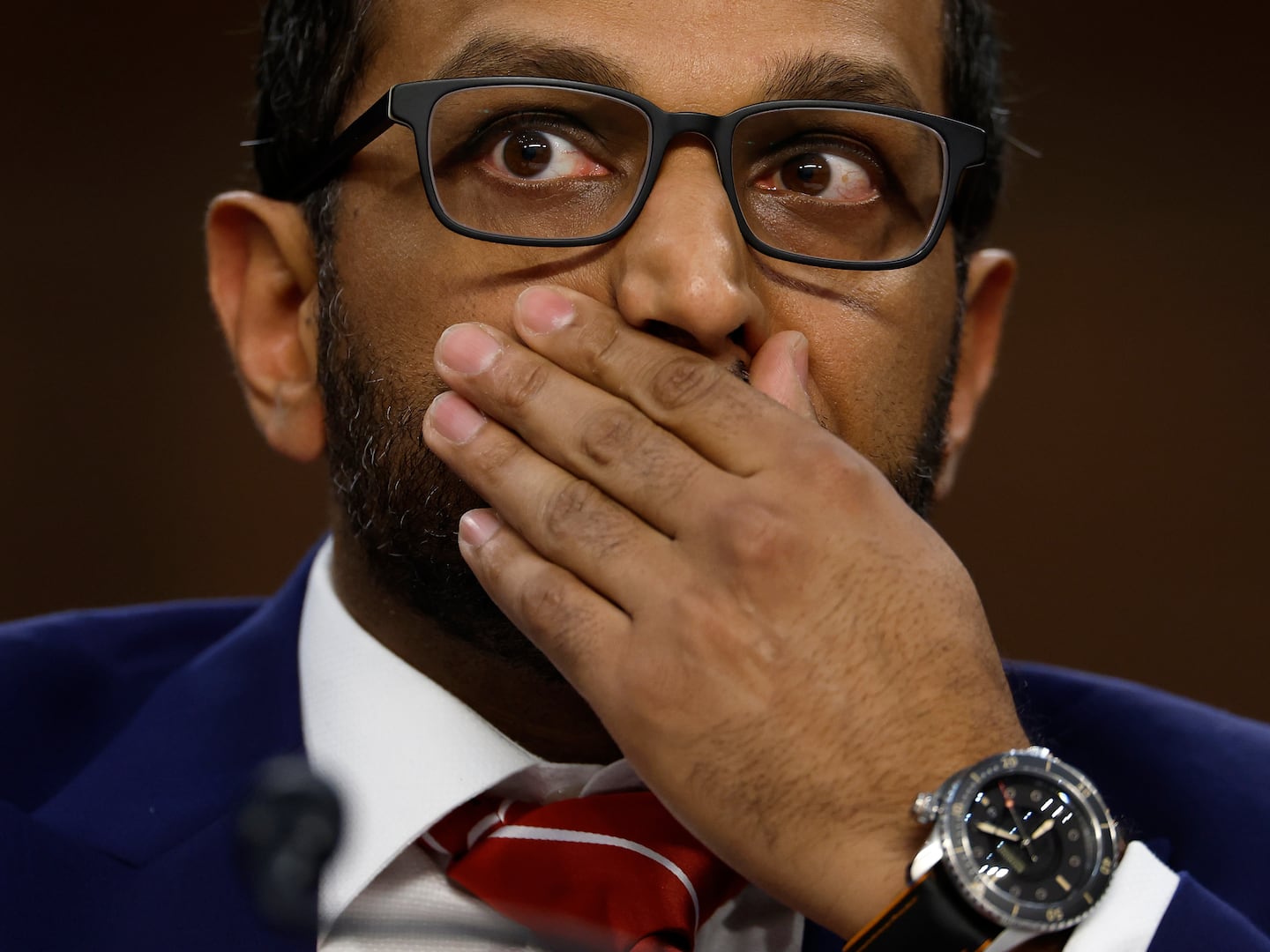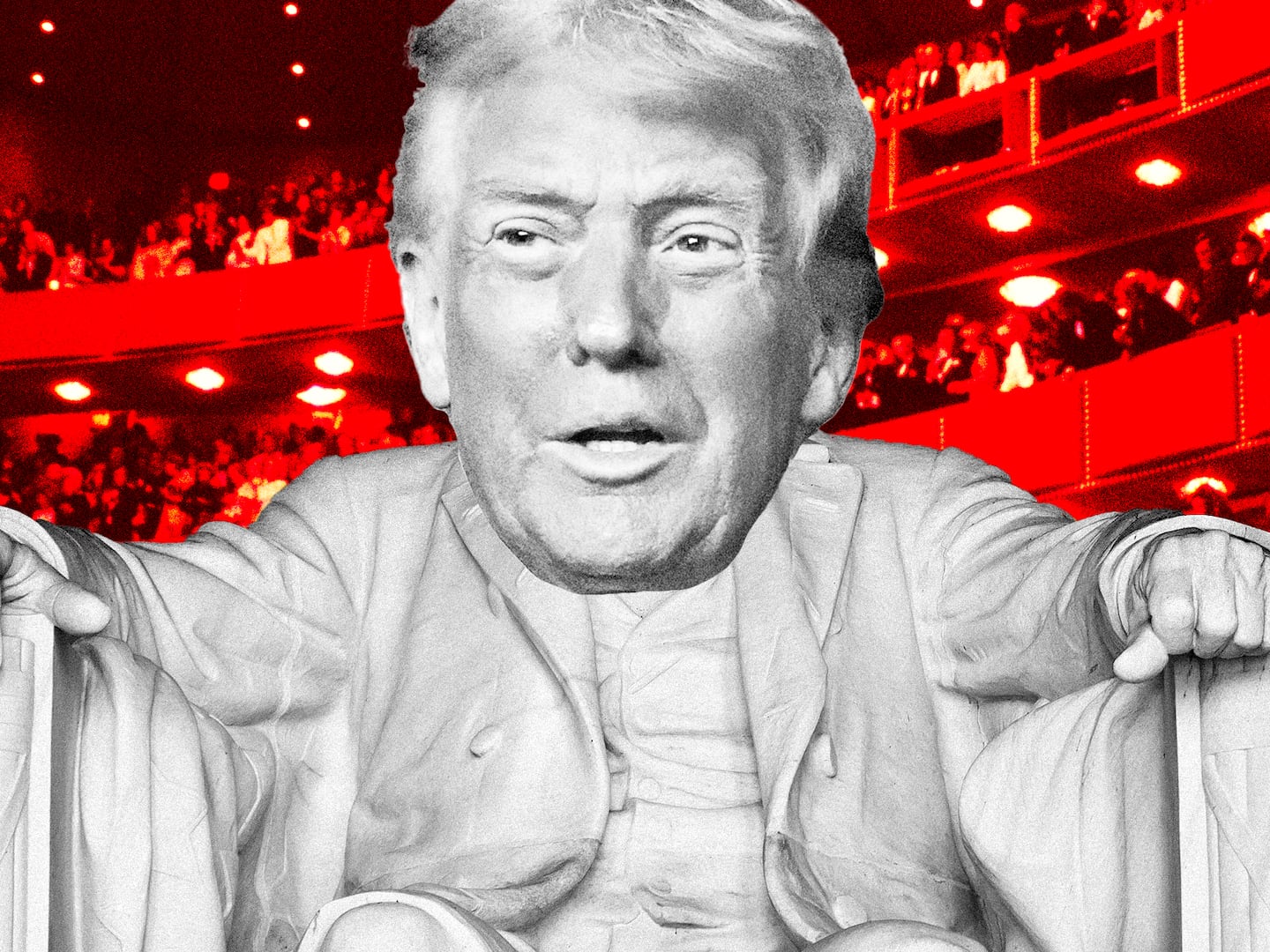As the University of Miami campus filled up again for an uncertain new school year last month, a group of students, faculty, and on-campus workers acted out a grim warning.
On Sept. 4, demonstrators lay on the ground as if dead, some of them holding tombstones, while a Birkenstock-clad person in a grim reaper costume patrolled the scene.
The protesters were targeting what they said were unsafe working conditions for staff and faculty amid the COVID-19 pandemic. (Students have the option of learning remotely.) But they soon experienced a second scare: Despite all participants wearing masks, the university had managed to identify them and summon them to scolding by the Dean of Students.
The students feared the school used facial recognition technology on them. But the school told The Daily Beast it didn’t need to. Instead, using its high-powered camera system and in-house police force, the university was able to identify masked protesters with their faces and their university emails.
In an email to participants in the Sept. 4 protest, first obtained by the school’s student publication The Miami Hurricane, administrators invited students to a Zoom meeting to discuss their action. The school’s Dean of Students told attendees that, although they were not facing disciplinary measures, they had broken school rules against holding a demonstration on university space without permission.
Graduate student Mars Fernandez said the email, which arrived weeks after the protest, came as a shock.
“I felt scared. I felt really, really nervous,” she told The Daily Beast. “We thought we had participated in a successful demonstration, that we had uplifted community concerns more publicly than maybe our previous letters and petitions and statements throughout the spring, summer, and early fall. We were really hopeful that maybe we could do more public demonstrations. This hit us two weeks after. So when I got the email two weeks after, my heart sank. I was like, ‘No, we’re not out of the woods with this.’”
Students who received the email told the Miami New-Times that they suspected the school had used facial recognition software on them. Fernandez, who took careful notes throughout the meeting with Dean of Students, Ryan Holmes, recalled Holmes saying that he did not know the specific techniques used to identify protesters, but that he mentioned casually that it might have involved software.
Specifically, Holmes told students in the meeting that university police had provided him with a list of their names a week or two after the protest. He also said he believed their names had been identified using a software that could use surveillance cameras to help students locate lost laptops, or, in another example, to identify a man who appeared to be chasing a woman on campus. Holmes said the software had been used to trace the man and the woman, who turned out to be friends playing tag. The young man in that encounter was scared when the university contacted him about the tag game, Holmes said, according to Fernandez.
The University of Miami says it does not use facial recognition software, period.
“The University of Miami does not utilize facial recognition technology,” a university spokesperson told The Daily Beast.
But the University of Miami Police Department Chief David Rivero told The Daily Beast the school didn’t need facial recognition technology to name the students—because the University of Miami has sweeping cameras and a fleet of law enforcement available to identify the students on film.
“We were able to take the footage that was way up high of the people that were at that protest and we gave it to the detectives and they set out using their investigative techniques to identify some of the students that were there,” Rivero said. He said that the students’ masks ultimately did not stop them from being identified.
“How could facial recognition work if they’re wearing masks?” he added. “It should tell you that we’re using other techniques. Just basic investigative techniques.”
Fernandez also speculated that footage had been used to identify the masked students by following them when they walked back to dorm rooms or cars. “That feels just as creepy,” she said.
Although Rivero said the UMPD does not maintain the database of student and faculty photos that would be necessary for a facial recognition program, the school has nonetheless used facial recognition in the past, outsourcing the task to a state agency.
The digital rights organization Fight for the Future noted an article in the student publication Distraction Magazine earlier this month, in which Rivero described using facial recognition technology to identify a thief on campus. Rivero told The Daily Beast that in cases like that, the university uses its cameras to take pictures of a suspect and then sends the pictures to the Florida Department of Law Enforcement, which uses its facial recognition software to find a match in a database of people with prior arrests.
But the Distraction article also highlighted other instances in which the university’s high-powered cameras had been turned against students, including a recent instance in which a freshman was caught allegedly breaking into washing machines.
A resume for Rivero on the UM website describes him as overseeing “the new university-wide camera system (CCTV). The system now includes 1,338 cameras, recording 24 hours a day, and featuring video analytics which is the use of sophisticated algorithms applied to a video stream to detect predefined situations and parameters such as motion detection, facial recognition, object detection, and much more.”
Rivero told The Daily Beast the university had tested facial recognition in the past, working with multiple companies, but had ultimately not implemented it because “none of it works.” Facial recognition technology has been shown to result in false matches, especially when identifying people of color. Sometimes those false positives can have disastrous results, like in the case of a Detroit man who was wrongly arrested based on an incorrect match.
Although none of the student demonstrators are facing punishment for the protest, the realization that the university could identify them even while masked was chilling, Ferndandez said.
“I think it makes a lot of us feel anxious that we’re being constantly watched,” she said. “It doesn’t feel natural. Who wants to be watched by people they don’t know, scrutinizing our behavior to see whether we’re following rules or not?”







